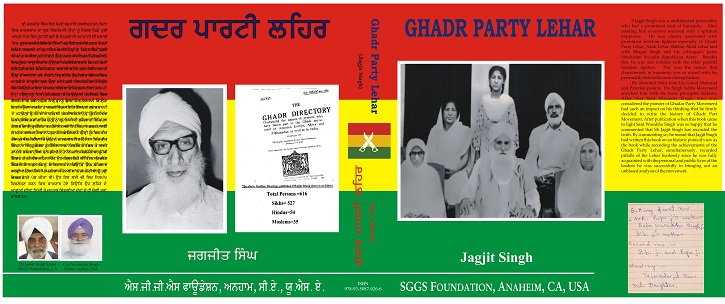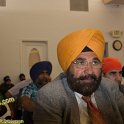| Connecting
over 25 millions NRIs worldwide |
|
|||||||||||||||||||||||
|
||
Los Angeles, CA :Gadar movement in the United States was a movement to free India from the British rule. Lankershim Sikh Gurudwara of North Hollywood at Lankershim Blvd, organized a commemoration to celebrate the 100th anniversary of this movement in collaboration with several Sikh Gurudwaras in Southern California on Sunday, September 29, 2013.
Mr. Gurubachan Singh Bains was the Master of Ceremony, who moderated the program, which started at 12:00 noon, and ended exactly after 105 minutes as planned at 1:45 PM. The prominent researchers and speakers of the Centenary Commemoration spoke in Punjabi, Hindi, and English and paid vivid tribute to the heroes of the Gadar movement.
R. Srinivasan,NRIpress; Charanjit Batth-Fresno;Kanwaljit Singh; Pashaura Singh; Gurcharan S. Bains, Karamjit S. Kang and Gian S. Bilga Mr. Gian Singh Bilga of Bakersfield spoke on the history of Gadar Movement and the sacrifices made by the Gadarites. He said, “The Gadarites left their secured means of livelihood in America and Canada and went to India to liberate their motherland. Forty-six Gadarites were hanged until death, sixty-nine were imprisoned for life and several were sentenced for varying terms of imprisonment. They are our heroes, deserving our admiration and deepest respect.” Mr. Pashaura Singh of Fresno talked about Sohan Singh Bhakna who was the president of the Hindustani Association of the Pacific Coast which has become known as the Gadar Party after the name of their weekly journal Gadar. Messers. Channpal Singh, Jaswant Singh Dhillon, and Jagdish Kangura/Pritam Singh talked about the life and sacrifices of Lala Har Dayal, Secretary General, Kartar Singh Sarabha, Editor of Gadar Magazine in Punjabi and Kartar Singh Dukki respectively. Mr. Pritam Singh pointed out that Kartar Singh Dukki was in charge of the Gadar press where 5000 copies of Gadar magazine were printed every week for free distribution all over the world. Dr. Jasbir Singh Mann spoke about the roles of which Gurdwaras and Sikh priests played in mobilizing the overseas Indian community against the British rule in India. Mr. Karamjit Singh Kang spoke about the hardships suffered by Gadarites while imprisoned in Andaman and other Jails. Ms. Helen Singh talked about the Gadar Memorial Hall which was the headquarters of the Gadar Movement. The building was purchased by the Gadarites in 1913 and was handed over to the Indian Consulate after India got independence. This hell is being renovated by the Consulate General of India, according to Mr. Parthasarathi, the Consul General of India, in San Francisco. Inder Singh spoke about paying tribute to Gadarites for their sacrifices for the sake of freedom for India. He said, “We can forget and ignore what our pioneering generation has done and passed on to us or remember and express our gratitude.” He reminded, “Every year, Americans pay tribute to their martyrs. The last Monday of May is observed as Memorial Day – to honor those who gave their all in service to their country. Gadarites also gave their all to free their motherland. But there is no Memorial Day for them.” He appealed that the community leaders should organize tribute events to perpetuate the memory of the brave Indian Americans who laid down their lives in pursuit of freedom for India. It will be a great service to educate our community of our Indian American history, of our Indian American heritage, of passing on the legacy of the pioneers to the next generation. Mr. Paushaura Singh read the poem on the Gadar movement. Mr. Kanwaljit Singh wrapped up the program by a Kirtan. Portraits of Gadar heroes which were displayed at the entrance hall of the Gurdwara, attracted streams of people. They are displayed elsewhere along with this article. Mr. Gurcharan S. Bains moderated the event while Mr. Kanwaljit Singh highlighted what the various speakers said in their speeches. All the speakers were given Siropas (Towels –orange-saffron color) by the Gurdwara management. The seminar/commemoration was followed by Langar (meals) served by many volunteers, and men and women participated in the preparation and serving of food. The organizers, some of the sponsors, and the speakers had an informal meeting after the lunch, where steps taken so far to include the Gadar movement in the California History Standards for K12 curriculum was discussed. Mr. Charanjit Singh Batth the largest farm owner (18000 acres in Caruthers, CA) of Indian origin from the San Joaquin Valley (near Stockton, Central CA) area, offered to provide funds for this cause, if needed. Mr. Gary Singh (Grewal) of NRIPress and NRIinternet.com introduced Mr. Raj Srinivasan, the writer of this report, also an educator. He suggested some ways of getting the information in, not only in the History curriculum, but also in the English curriculum, by approaching the State Board of Education again, and the State Curriculum Committees. He also recommended approaching the text book publishers in this regard. -----------------------
|
||
| |
|
CLICK FOR MORE THAN 100 PHOTOs
|

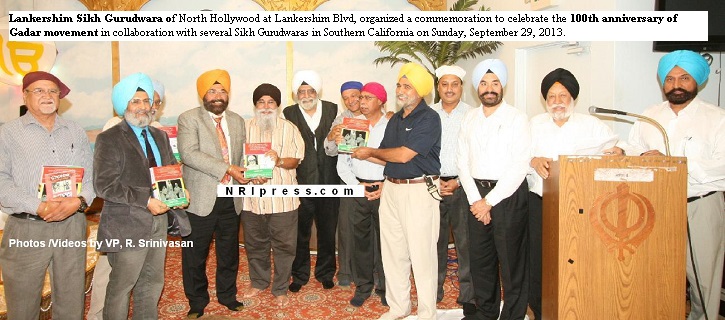
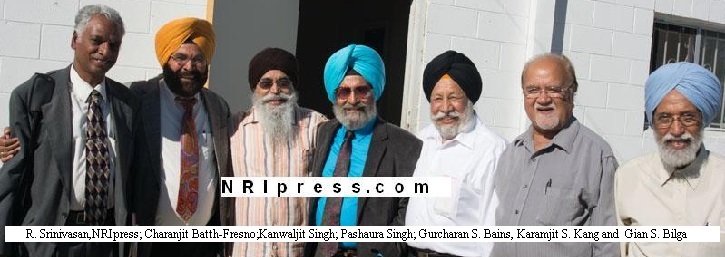
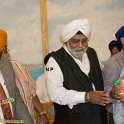
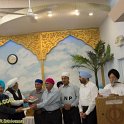 Priests in sikh temples 1907-1918 IN NORTH AMERICAplayed very important role in Preaching SOCIALIST doctrines, of siksism on equality, freedom AND FIGHT against INJUSTICE IN WORLD for all starting WITH naam japo,wand chako,kirat karo and REMINDING THE SIKH HISTORY AND THEIR heritage how they uprooted mughals from north India in 18th century. Therefore
Priests in sikh temples 1907-1918 IN NORTH AMERICAplayed very important role in Preaching SOCIALIST doctrines, of siksism on equality, freedom AND FIGHT against INJUSTICE IN WORLD for all starting WITH naam japo,wand chako,kirat karo and REMINDING THE SIKH HISTORY AND THEIR heritage how they uprooted mughals from north India in 18th century. Therefore